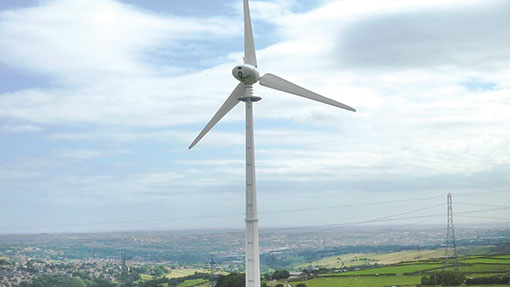Farm renewables can benefit from peer-to-peer funding opportunities

Peer-to-peer financing of renewable energy projects is becoming more popular. Paul Spackman asks Robert Smith at Bruton Knowles to explain why and provide some tips on how the process works
What is peer-to-peer lending?
Also known as crowd funding, these internet-based lenders effectively act as intermediaries between any number of individual investors (members of the public or companies) and those with suitable projects that require significant capital expenditure (for example, a farmer or landowner putting up a wind turbine or solar panels).
Peer-to-peer lenders are becoming increasingly interested in renewable energy projects.
Is it for any project?
Peer-to-peer lending is usually most applicable to those with projects that already have planning consent and grid connection arranged, and are looking to secure funding relatively quickly.
The types of projects preferred by each firm vary, although many peer-to-peer lenders do prefer larger-scale projects, typically costing from £300,000 upwards.
Projects with a relatively low-risk profile and straightforward income stream tend to have the greatest appeal, which is why wind turbines have been the most popular technology so far.
Why has it become popular?
As web-based business and interest in green technology has grown, so have the opportunities around this. The introduction of Feed-in Tariffs led to companies realising that renewable energy projects, once seen as a “risky” proposition, potentially offer long-term, stable, index-linked income and something of a safe haven in periods of economic turmoil. Consumers, too, have been looking for alternative places to invest money.
For those developing a renewable energy project, peer-to-peer lenders offer a new and alternative source of funding that potentially allows money to be drawn-down quicker (see below) and without compromising existing borrowing.
How is it different to a bank loan?
While all of the main high street banks lend to renewable energy projects, loans are normally secured against the business’s existing assets (for example, land and buildings) rather than the renewable energy project.
By contrast, peer-to-peer lenders will look at the project in isolation, lending against the actual or potential income of the asset (for example, Feed-in Tariff) over its lifetime, normally 20 years.
Peer-to-peer lending is no different to any other lending in so far that if there is already a loan against the farm property, the first lender’s charge will take precedence and their consent will be required. Otherwise however, there should be no need to inform your bank.
How are projects valued?
Base income is calculated, net of annual outgoings, which includes operational maintenance costs and insurance. The value of the project is assessed as a discounted cashflow that offers an investor a suitable rate of return and pay back, normally somewhere around six-and-a-half years.
Typically around 75% of cashflow from a wind turbine is from the FiT while the remainder is from electricity export sales (usually through a power purchase agreement).
Energy savings within the existing business are not included in the valuation process, although these can be considerable in some farm-based situations.
Things to consider
Every peer-to-peer lender has their own lending criteria and way of working, but generally they will not lend the full cost of the project and typically require at least 30% of capital to be put in by the person developing the project. Exact proportions vary depending on the project and its risk profile.
Lenders also normally hold “step-in rights” that allow them to take control of a project in the event of a default on the loan.
Generally rates available from peer-to-peer lenders may be slightly higher (for example, 8.5-9%) than those available through banks.
Peer-to-peer lending is also still very new and developing, so anyone considering this route should seek expert advice at an early stage.
How does the process work?
Generally anyone considering peer-to-peer finance should approach it in a similar way to any other potential lender and ensure they do adequate research and be clear on all the terms and conditions from the outset.
Once a lender has been chosen, projects are normally then posted online at an agreed interest rate and registered members can then bid varying amounts. In some cases the minimum investment may be as little as £5.
Once the round of funding has closed (normally lasting 10 days or so) the auction closes and it may then be as little as a fortnight before funding is available, subject to legal approvals.
Are peer-to-peer lenders regulated like banks?
From 1 April 2014, peer-to-peer firms became regulated by the Financial Conduct Authority (FCA), which should offer greater protection for both consumers and borrowers.
Funded-biomass boiler scheme offers cheaper heat on-farm
